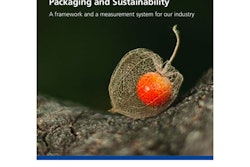In early June, the Environmental Law Foundation gave notice to the heads of 49 companies that they believed the companies’ products contained lead in excess of the amount deemed safe by the State of California under the infamous Proposition 65 law. Among the list of recipients were also some retailers.
Proposition 65, formally known as the Safe Drinking Water and Toxic Enforcement Act of 1986, may be more than 20 years old, but it is still turning industry, and logic, on its head. The law, passed by a voter initiative in California, requires the Governor of California to publish a list each year of chemicals the state considers to be either cancer causing or a source of reproductive toxicity (such as birth defects, etc.). Anyone who knowingly exposes a person to one of the listed chemicals, says the law, must provide a ‘clear and reasonable’ warning to that person of the presence of the chemical, or risk facing stiff financial penalties, unless the person causing the exposure can prove the exposure is safe. The law also provides for private citizens and organizations to undertake enforcement of the law and share in the financial proceeds.
The upside down nature of Prop 65 is based on the fact that it requires those who might expose consumers to listed chemicals to prove that the level of exposure involved is safe. They can potentially do that, once a person proves that they have been exposed to a listed chemical, by proving it poses “no significant risk” if it’s a carcinogen or the amount doesn’t exceed the “no observable effect level” if it is a reproductive toxicant. Thankfully, by now, California officials have published no significant risk levels, and Maximum Allowable Dose Levels (related to no observable effect levels), for many of the listed chemicals. But they have not posted levels for all of them, leaving a company to have to develop its own determination of whether the exposure triggers a warning, if that is possible given existing science, with the risk of substantial financial penalties if they are wrong.
Of course, once these levels are set, it is possible to determine that a small amount of the listed chemical is present in one’s product, but that the resulting exposure doesn’t go over the level, and therefore no warning is required. But a careful analysis is necessary to reach that determination.
Remember, the law doesn’t explicitly prohibit the presence of these chemicals, it only puts in place penalties for exposing people to the chemicals without first giving a warning. A typical warning would read, “This product contains a chemical known to the state of California to cause cancer.” But because many packagers so dread the prospect of placing a warning of this type on a product, they reformulate by removing the chemical or reducing the amount of the chemical so a warning isn’t required. That, in a nutshell, was the intention of the law.
Because companies don’t want to incur the costs and logistical problems associated with creating packages just for California and packages just for everywhere else, often they make changes in a product they sell everywhere because of California’s law. Thus, the state of California is driving nationwide law and business practices. But what to make of this large raft of accused products? Evidently the Environmental Law Foundation tested products and said that the Prop 65 limit of 0.5 micrograms per day, which is the MADL for lead as a reproductive toxicant, was found to be exceeded by their tests of these many products.
It remains to be seen whether these tests were valid and what the reactions of the individual companies will be. They might change production practices, or, (unlikely) add a reproductive toxicity warning to their food label. One industry trade group was quoted as noting that trace amounts of metals such as lead are present in the environment and therefore it shouldn’t be a surprise to find very small amounts of it in samples of all sorts of things. One place the lead is almost certainly not coming from is the food packaging. Thanks to another state law, this one adopted by about 20 states, the total concentration of the sum of certain heavy metals in packaging—lead, cadmium, mercury, and hexavalent chromium—must be below 100 parts per million (ppm). Moreover, under that law, heavy metals cannot be intentionally added to packaging materials.
If packagers are not already doing so, they should take this new accusation as a reminder to incorporate Proposition 65 compliance into their products’ stewardship programs. If they don’t, they could end up the recipient of the next wave of accusations.
Eric can be reached at [email protected], and visit his firm’s Web site at www.ericfgreenbergpc.com.






















